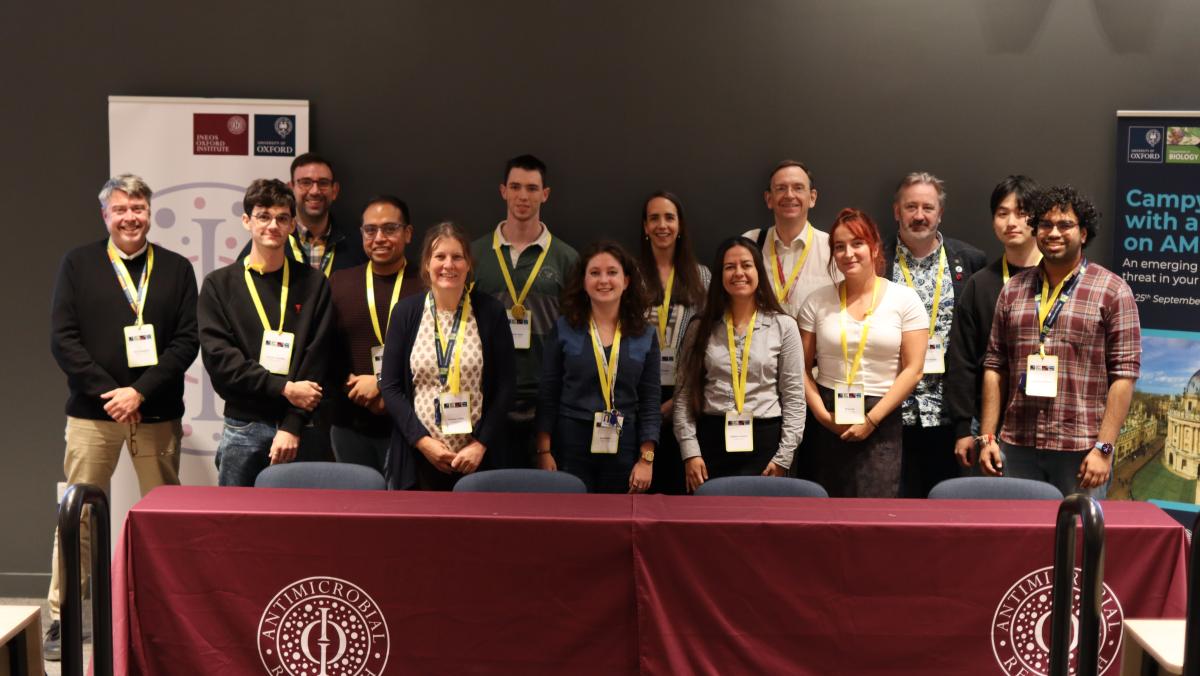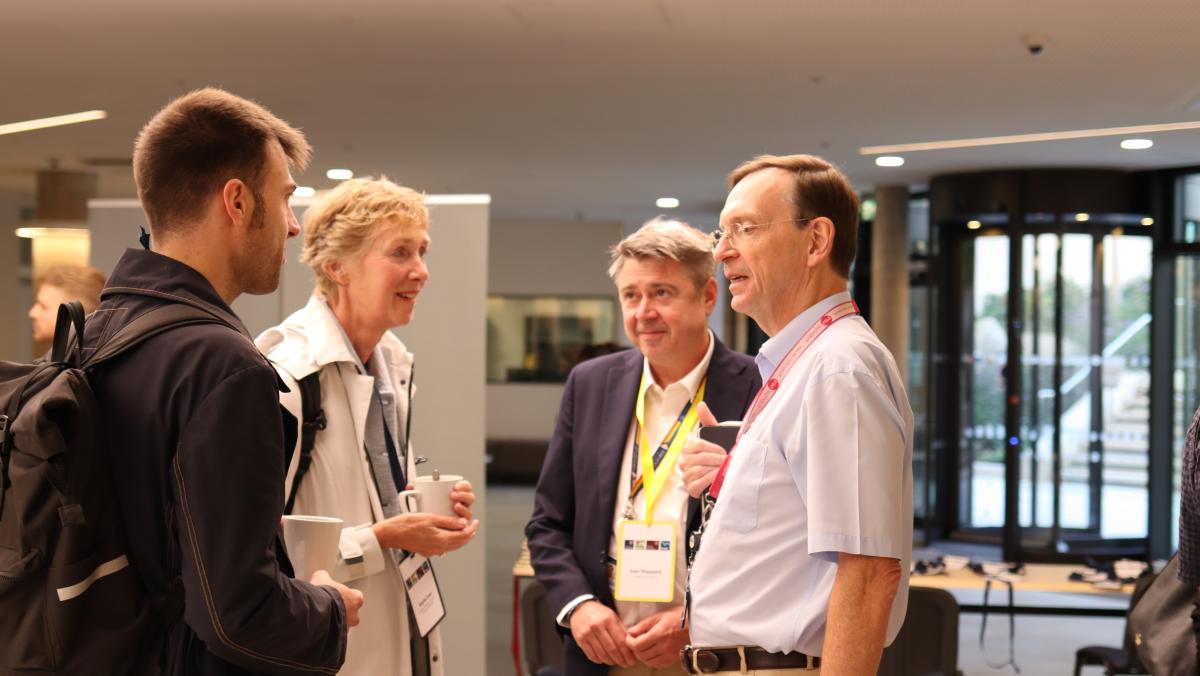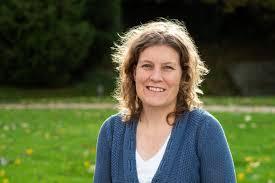Campylobacter and AMR: building collaborations for a changing landscape

CampyUk organising committee.
Last week over 85 scientists, vets, and public health experts, from across the UK and beyond gathered in Oxford’s new Life and Mind Building for a two-day meeting dedicated to antimicrobial resistance (AMR) and campylobacter.
Campylobacter is the most common bacterial cause of diarrhoea. These bacteria are prevalent in livestock such as poultry, cattle, pigs and sheep and can be transmitted to humans through contaminated water and food, especially poultry. Antibiotics have become increasingly ineffective against Campylobacter as bacteria have evolved to resist the action of these medicines.
Tackling campylobacter and antimicrobial resistance demands joined-up thinking across disciplines and sectors. No single approach can solve the problem on its own. Progress depends on collaboration between researchers, vets, clinicians, public health teams, and industry working together. Meetings like this are vital for building those bridges and translating science into real-world impact.

Scientific sessions covered latest findings on campylobacter biology and epidemiology. Presentations highlighted how antibiotic resistance, particularly to fluoroquinolones and tetracyclines is increasing, and how variation in bacterial surface structures complicates vaccine design.
Public health updates showed a 17% increase in campylobacter cases in England since 2023. New findings also pointed to new sources of infection, including raw pet food.
The One Health perspective (the link between human, animal and environmental health), was a strong theme throughout the day. Research on companion animals, wild birds, and livestock all demonstrated the complex web of campylobacter transmission between species and across borders. Surveillance programmes are increasingly using genomic sequencing to identify outbreaks, trace resistance mutations, and pinpoint geographic hotspots of infection.

Delegates during a coffee break at the CampyUk conference.
Studies from low-and middle-income countries shed light on the long-term health impact of campylobacter in children, showing links between repeated infections and growth stunting. Other work explored the genetic diversity of emerging campylobacter species and their mechanisms of resistance, while analyses from Southeast Asia highlighted how rapid growth in poultry production is affecting human exposure risks.
The discussions over the two days were very encouraging. It was inspiring to see so many different perspectives from molecular biology to policy, come together. The exchange of ideas and data shows that our community is not only growing, but also becoming more connected and solution-focused.

Speakers also explored innovative interventions to limit the spread of campylobacter. Experts discussed issues around food processing hygiene, optimising welfare to reduce bacterial carriage in poultry, and using blue light to safely kill campylobacter on meat surfaces. These efforts demonstrate the growing potential of non-antibiotic strategies in controlling the pathogen.
There was also a panel discussion on how to turn scientific evidence into effective policy. Despite reductions in the most highly contaminated animals, human infections have not yet fallen, pointing to the need for more funding and improved collaborative research between science, regulation, and industry.
